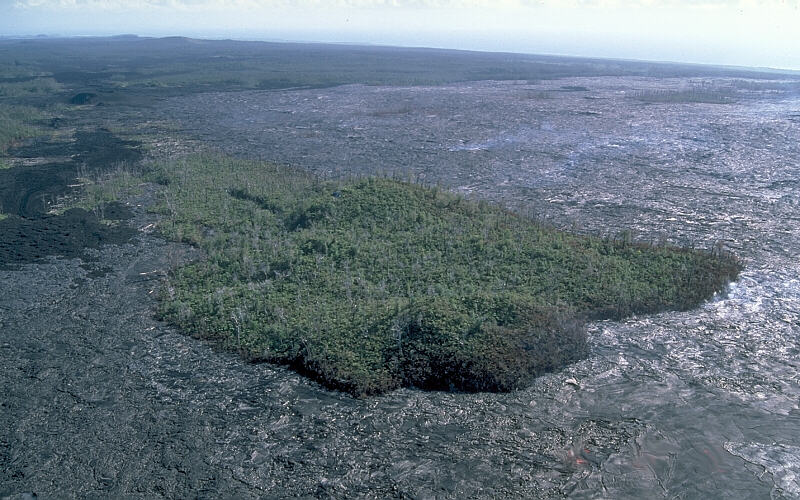In volcanic areas like Hawaii, a Kīpuka is an area of land that gets surrounded by lava, forming an "island" or hole in the lava that remains intact. It provides an island of life, surrounded by sheer black rock, where many species often thrive. Often, the Kīpuka area is a raised bump or has some other topographic irregularity that kept lava from covering it. Kīpukas can be just a few feet or can be several square miles.
Kīpukas also provide a source organic material which can be used to recolonize the lava-covered areas around it. Seeds and spores from the Kīpuka can blow or wash over onto lava, restarting life there through primary succession.
Ongoing eruptions from Kīlauea volcano, shown in the example below, cover 90% of the volcano's surface every 100 years. The plant community has adapted to bounce back very fast through primary succession.

Kīpuka on Kīlauea volcano on the island of Hawaiʻi in Hawaii
Craig Childs showing primary succession by ferns on lava next to a kīpuka
http://www.lastwordonnothing.com/2014/11/12/what-destruction-has-wrought/
USGS - see lower section on kīpukas
http://hvo.wr.usgs.gov/volcanowatch/archive/1999/99_01_21.html
Craig Childs on Kipukas
http://www.lastwordonnothing.com/2014/11/12/what-destruction-has-wrought/
Kipukas - NPS
http://www.nps.gov/crmo/learn/nature/kipukas.htm
No comments:
Post a Comment